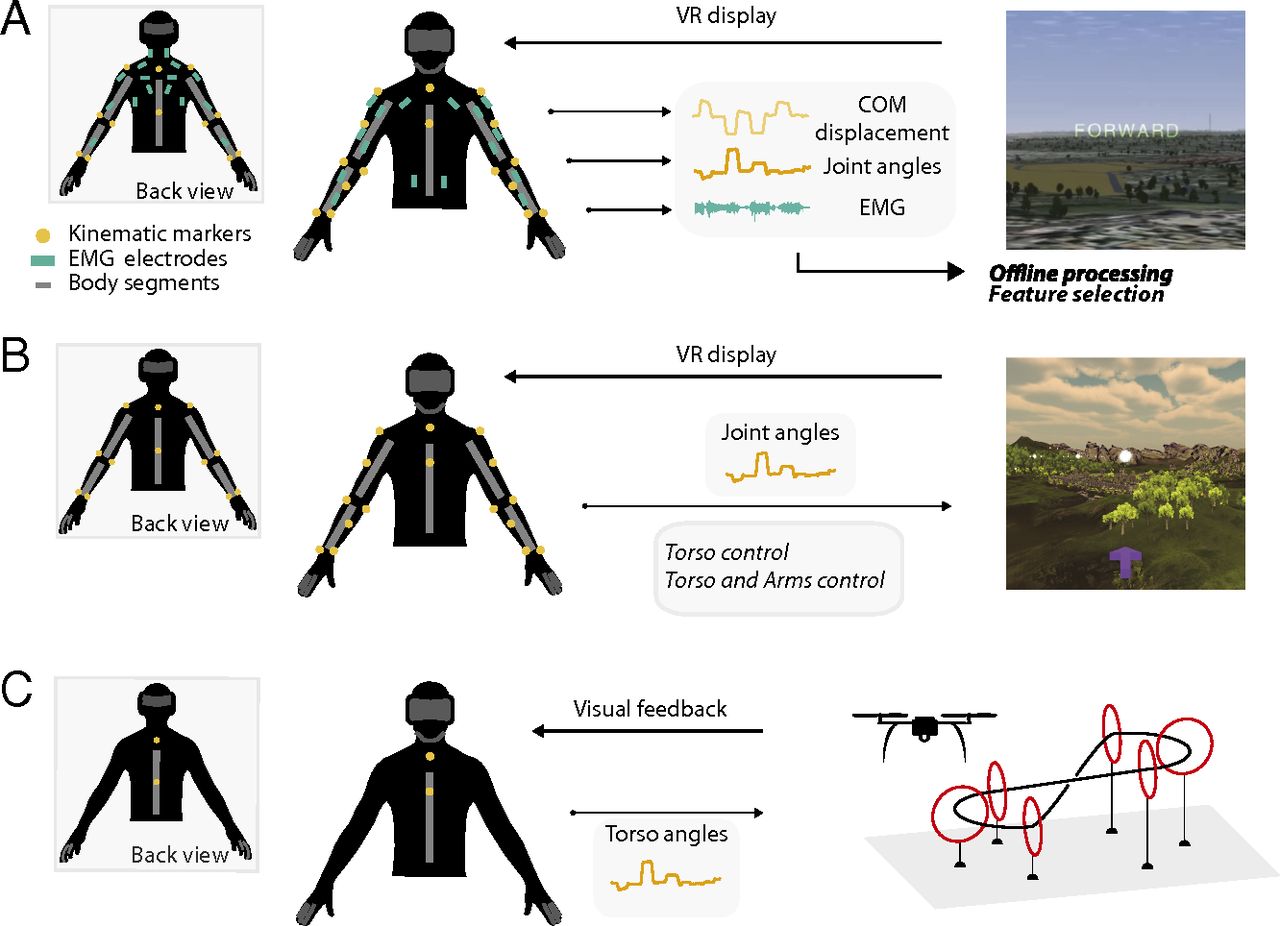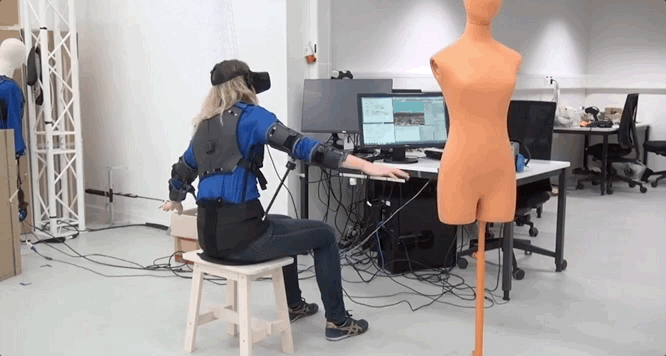A Swiss research team has come up with a new technique to fly drones that doesn’t require your hands, because why not?
A group of scientist at École Polytechnique Fédérale de Lausanne (EPFL) have come up with a technique that uses VR and a custom motion capture suit to allow users to precisely maneuver their drone using only their torso.
According to a recent research paper published in the journal Proceedings of the National Academy of Sciences of the United States of America, it’s a technique that gives users intuitive, gesture-based drone. In terms of learning time and steering abilities, this new method is actually capable of outperforming standard joystick devices.
The process of developing a data-driven, body-machine took some time. The research team first needed to understand exactly how the human body would naturally move when imitating the movement of a drone. To do this, nineteen motion-capture markers were attached to the upper bodies of a group of volunteers as they watched drone footage through a VR headset, They were then asked to use their bodies to simulate the drones flight pattern.

Through this data collection, scientist found that most volunteers kept their arms out as if their arms were wings, while simultaneously moving their torsos. Eventually, the team was able to see a common motion pattern emerging among the volunteers. The team quickly realized that since a majority of the motion was happening in the upper body, they could scale back the number of motion-capture markers needed from nineteen, to just four.

Scientist were able to observe five distinctive flight behaviors with their volunteers; constant forward motion, right-banked turn, left-banked turn, upward pitch, and downward pitch. “Using your torso really gives you a feeling that you are actually flying,” said Jenifer Miehbradt, in a press release, adding “Joysticks, on the other hand, are a simple design but mastering their use to precisely control distant objects can be challenging.”

What the team discovered was that the process was a simple and intuitive approach, and could be used with other areas such as machines, operations, even the improvement of teleoperation of robots with non-human mechanical attributes.
One drawback researches found was that some volunteers wanted to naturally raise their arms up like wings during flight, which would result in serious arm fatigue. To resolve this, the team created a ‘Fly Jacket’, which has sensors built into it along with brackets to help support your arms during flight.
The aim of the team’s work was to design a method what would be easy to learn and require less mental focus from users, so people could focus on more important issues. As drone technology evolves, the roles that drones have in our world will also evolve. They are used in everything from photography and sports, to the military operations, exploration, even search and rescue.
The potential of using your torso for drone flight could be huge. Or maybe you just want to know what it’s like to fly around your neighborhood.
Image Credit: Proceedings of the National Academy of Sciences of the United States of America
The post You Can Now Pilot A Drone Using VR And Your Torso appeared first on VRScout.
from VRScout https://ift.tt/2LUWinZ
via IFTTT
No comments:
Post a Comment